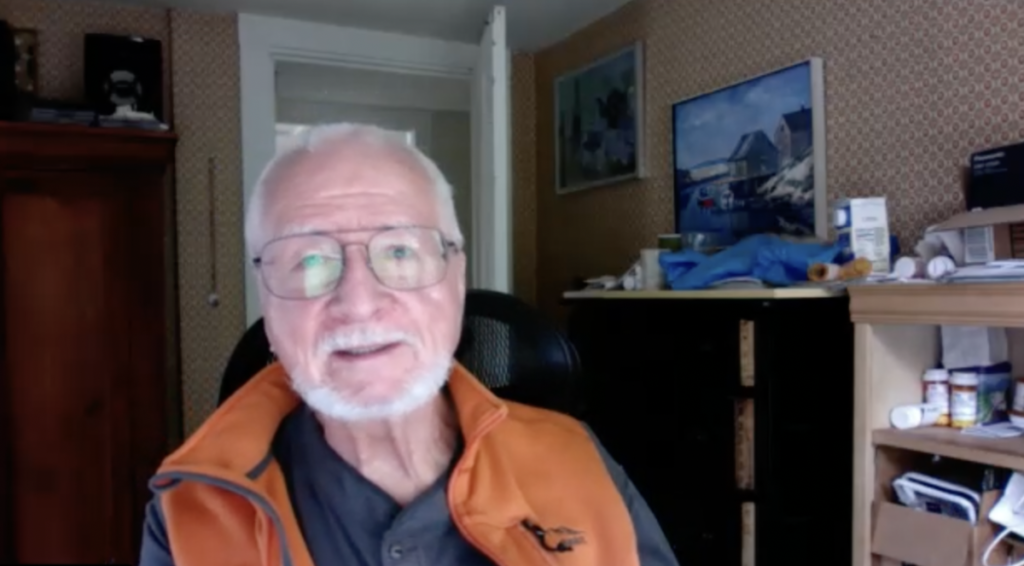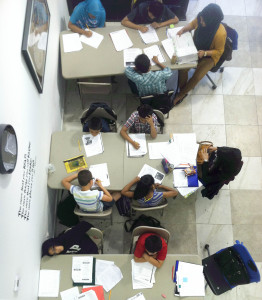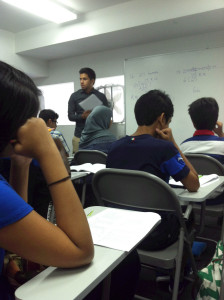In the midst of New York City’s housing crisis, in which Mayor Eric Adams has initiated the construction of a tent city for over 10,000 migrants, a huge silver-colored dome-shaped hut made of rigid steel sits between Rosedale and Metcalf — in the middle of Seward Avenue — in Soundview. It’s a reminder that the problem of housing scarcity or affordability is not recent. It dates back almost 76 years, with innovative and arguably questionable emergency housing solutions being prevalent both post-war and today.
The hut is located next to a parking garage that at first glance appears to be abandoned, with a wire fence that is frequently locked surrounding both the garage and the hut.
Technically, it’s known as a Quonset hut and could be one of many that were built in the United States during World War II. They were mostly utilized by the military for a range of things, including barracks, storage, sheds, offices, and hospitals. After that, they were converted into affordable housing for returning veterans who had started families, due to the urgent housing shortage, post-war. The housing shortage however, dates back to the post-depression era between 1929 and 1939.
WATCH: Bronx Ink reporter Mansi Vithlani takes us inside the hut.
Records indicate that there was an entire neighborhood of Quonset huts in Castle Hill, in the south Bronx, in the late 1940s and early 50s. They were used as temporary housing for returning WWII veterans, nearly 962 families.
The George Fuller construction company is accredited with being the first to produce Quonset huts for the US Navy in 1941. The Quonset hut design however, was influenced by the more intricate Nissen hut design, created by the British during World War I. The Quonset Point neighborhood, a Navy base in Rhode Island, is where the first production site of the huts was located, giving them their name.
The hut at Soundview is not a remnant of World War II and is now used for storage, according to a New York City Housing Authority spokesperson. NYCHA owns the hut, according to property records. It’s part of Soundview Houses, a development built in 1954. But NYCHA does not know where the hut came from.
A NYCHA spokesperson said they were unaware whether the hut was relocated from another location, such as the Castle Hill hut development and placed in Soundview, or if it was built from scratch for storage. It does, however, serve as a poignant reminder of the housing crisis in the 1900s.
Utilizing NYC Then & Now, from 1951, 1996 and 2004, the Quonset hut in Soundview does not show up until after 1996.
1951 – No development in Soundview
1996 – No hut
2004 – Hut clearly shown
1951 – Quonset Hut neighborhood in Castle Hill, Bronx
There was a dire need for veteran housing in the 1940s, and so the Quonset huts were placed in subdivisions, which are divided plots of land for homes for families, as a way to control the ongoing crisis. “The housing emergency was to push public housing again, because it wasn’t there,” said Nicholas Dagen Bloom, a Professor of Urban Policy and Planning.
“From the 30s definitely until the 50s, there was this dominant view that the city needed to be reconstructed and enormous money was available from mostly the state and federal governments to do this (construction) work until the 1960s,” he added.
Sebastian Mudry, 77, lived in a Quonset hut in Castle Hill with his parents and two younger brothers from 1951. He was about to start kindergarten at the time. “I loved it because we had a place of our own… We had been living at my grandmother’s…And it was overcrowded,” Mudry said.
LISTEN: Sebastian Mudry recalls his move to the Quonsets.
Mudry wrote about his experience in “A Bronx Boys’ Christmas,” a book about a Christmas party for 50 or 60 of the Quonset hut kids, with one hut decorated with festive ornaments and a feast laid out for the children to celebrate the holiday.

He recalls the hut he once called home feeling luxurious at the time, as they had the kerosene stove. “That kept us warm,” Mudry said. There was also a small kitchen and a bathroom in the hut. “(It) had just a shower, I believe, not as I recall a bathtub, just room enough up for an upright shower,” he added.
LISTEN: Mudry explains the layout of the Quonset hut.
Each hut was divided for two families by a wall, but sound was able to pass through, according to Roger McCormack, director of education at the Bronx County Historical Society. He explains that although the shelters featured kerosene stoves, they were not favored by the majority. “I know there were a number of complaints that they weren’t heated very well, there were leaks, so it was a short period of time for them to live in,” McCormack added.
The Housing Act 1949 began new significant federal appropriations for public housing to help with the post-war housing shortfall, and according to Bloom, these projects in New York, were pushed by Robert Moses and his ambition in redeveloping the city.
Research indicates that Robert Moses, known as the “master builder”, was appointed to the City Planning Commission in 1941, and that he later served as chairman of the Emergency Committee on Housing. Moses decided to take advantage of the surplus huts that were available after the war which could serve as temporary housing by assembling them on vacant land.
“Robert Moses was not a fan of public housing, he didn’t really run it until the mid 1940s, but then when he did, he turned it into a machine for building. He was called the construction coordinator in the post-war year, so all of the money that came to New York had to come through him,” Bloom said.
Moses’ implicit authority over subsidized housing was fully established once he was chosen by Mayor William O’Dwyer to serve as the City Construction Coordinator in 1946. In 1946 huts in Soundview can be traced to Mayor William O’Dwyer. He requested that New York City receive 1,345 Quonset huts that would be constructed in Soundview Park, spanning 148 acres of land, and that the Board of Estimate and the Public Federal Housing Authority provide the temporary housing units.
“Soundview and Castle Hill was always farmland, it was marshy and particularly in the 1940s, it was fairly inhabited, so that’s why they chose that as a location,” McCormack said.
Living in a Quonset gave Mudry the opportunity to live a typical childhood, playing games such as tag, hide-and-seek, red light, green light, 123, and he never encountered bullying. “It was like a city of Quonset huts… it was a delightful experience, ” he added.
LISTEN: Mudry recalls his experience living in the Castle Hill Quonset.
Within a few years, the families were rehoused into new NYCHA developments if they qualified, Bloom explained. Following a “$57 million city investment” that had started in 1961, high rise apartment constructions would begin, removing the Quonset huts in the Bronx and replacing them with modern row homes and apartment complexes with multiple units.
Almost 76 years later, affordable housing units remain a pressing concern for New York City residents. The city is currently experiencing a housing crisis with more than 52,000 homeless people in NYC.
“It’s such a huge crisis right now. We’ve been talking about the housing crisis for way too long, years, decades, but I didn’t really appreciate it until the other day looking at numbers about just how big the current crisis is and how overwhelming the need is,” said Brendan Cheney, Director of Policy and Communications at the New York Housing Conference.
“Quonset huts and tents, it’s a story right there, right? New York did this,” Bloom said.
In response to the thousands of asylum seekers being brought across the Texas border, Adams ordered the construction of relief centers, referred to as “tent city,” which were initially set up in the Bronx and eventually moved to Randall’s Island as a result of flooding.
“The Quonset huts were really a waystation for a very brief period, and they were erected at the same time the city was launching vast and enormous housing projects on a scale. So there’s that difference. There will be this temporary housing but there really isn’t permanent housing available for the migrants,” Bloom added.
The current housing supply cannot address the crisis as is, and that more federal assistance is required, Cheney explained. “It’s been going on for 70 years, and it’s not, ‘but now we’re finally approaching the end’. No, it could continue for another several years. I hope not, but it’s so frustrating,” he added.







